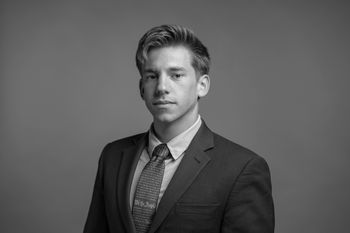Court rules law school can conceal abolitionist murals some students find racially insensitive
An artist filed a lawsuit against Vermont Law School for covering up his 30-year-old campus murals depicting Vermont’s role in the Underground Railroad.
Pushback began in the wake of George Floyd's death after some students expressed outrage over the artist's depictions of African Americans.
On Aug. 18, the Court of Appeals for the Second Circuit ruled that Vermont Law School was within its rights to permanently hide an artist’s murals commemorating the state’s participation in the abolition of slavery from view.
Samuel Kerson painted two murals, The Underground Railroad and Vermont and the Fugitive Slave, on a wall inside a Vermont Law School campus building back in 1993 at the commissioning of the institution’s administration.
According to the lawsuit, the murals memorialize “Vermont’s role in the Underground Railroad, depicting 3 scenes from the United States’ sordid history with slavery and Vermont’s participation in the abolitionist movement.”
[RELATED: Harvard prof files $25 million lawsuit against the university, alleging sexism]
However, the works stirred widespread controversy around the campus. Students on campus said that Kerson’s portrayal of black people was racist.
They also said that the caricatures were “cartoonish,” “animalistic,” with “large lips, startled eyes, big hips and muscles eerily similar to ‘Sambos’.”
In response, the university informed Kerson in 2020 that it would be erecting walls around the murals to obstruct them from view—leading Kerson to file a complaint against the school in late 2020 for violating the Visual Artists Rights Act (VARA).
In August, the court sided with the law school and concluded that the institution can hide the murals without intruding on the artist’s rights. The lawsuit defends its decision by saying that “hiding the Murals behind a barrier neither modifies nor destroys them and, therefore, does not violate VARA.”
It also states that “Because VARA does not afford artists a categorical right to demand that their works remain on display, we affirm the judgment of the district court.”
[RELATED: Creighton University keeps its vaccine mandates amid an ongoing lawsuit]
The university’s decision to challenge the artwork was traceable, in part, back to George Floyd’s death in 2020. Yet, Vermont Law School’s representing attorney, Justin Barnard, admitted that he thought the artist’s intentions were good.
“However, over the decades, and especially after the death of George Floyd in 2020, the school administrators decided that they could not avoid the voices of students who were critical of the murals,” he said.
Campus Reform was unable to contact Kerson but reached out to all other relevant parties for comment. This article will be updated accordingly.

